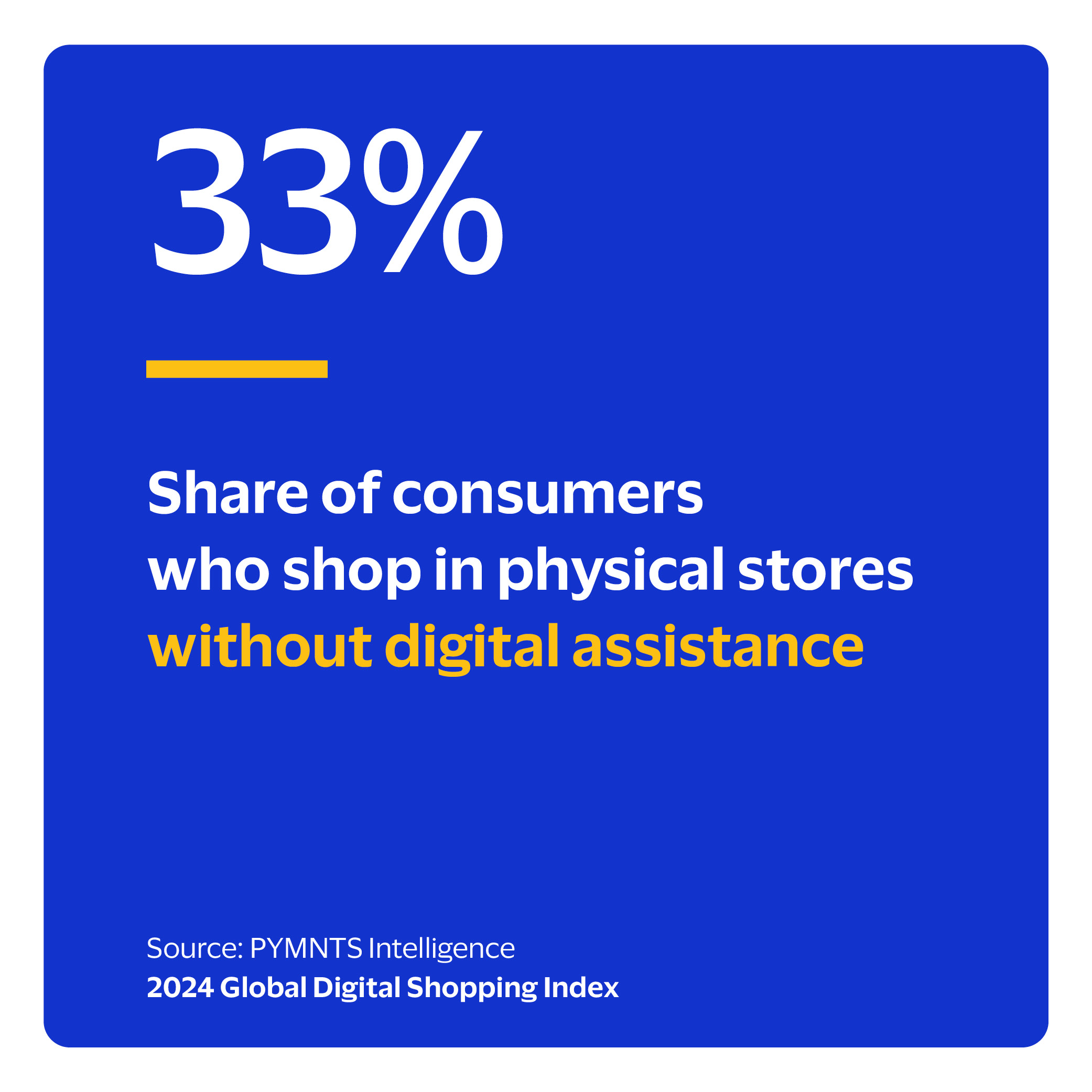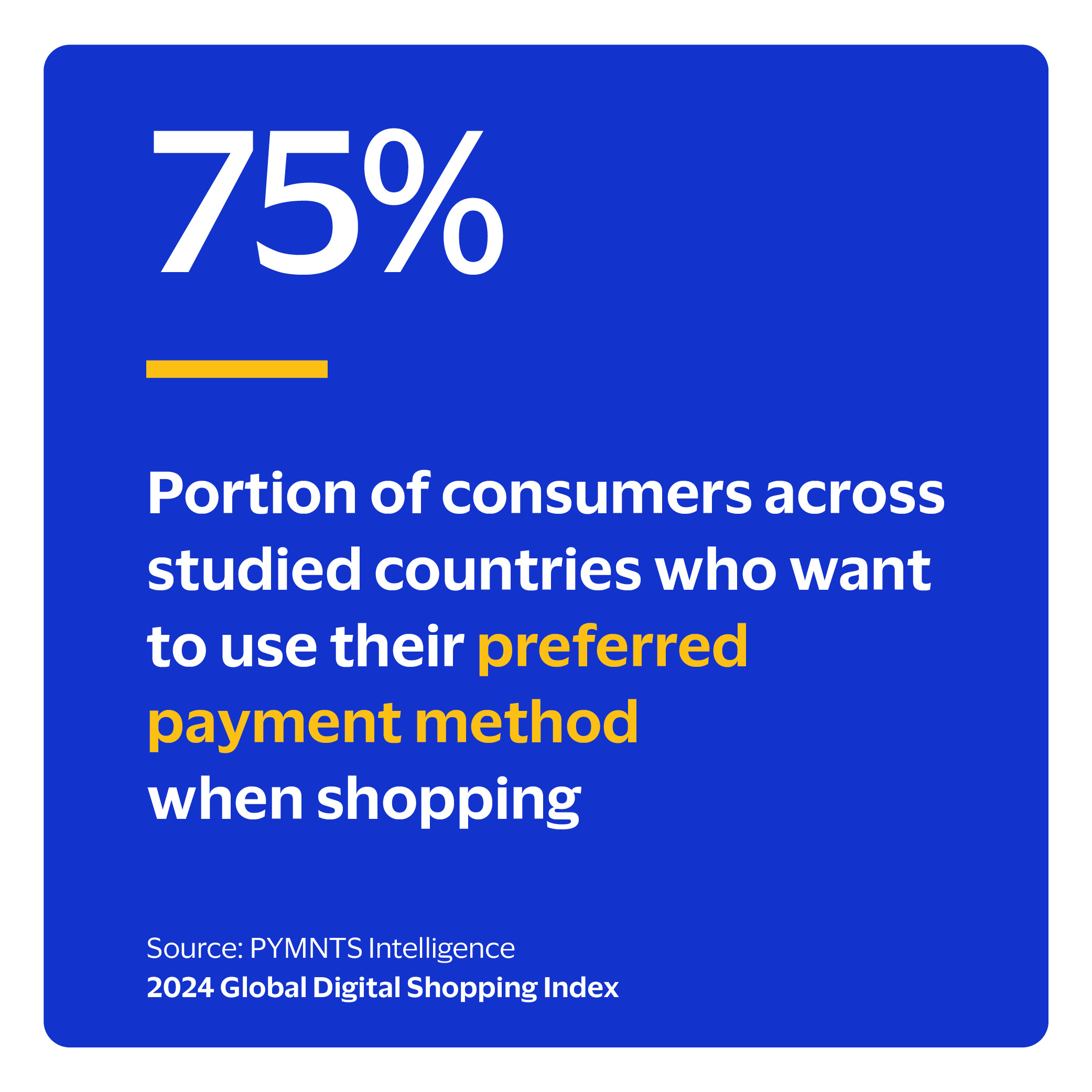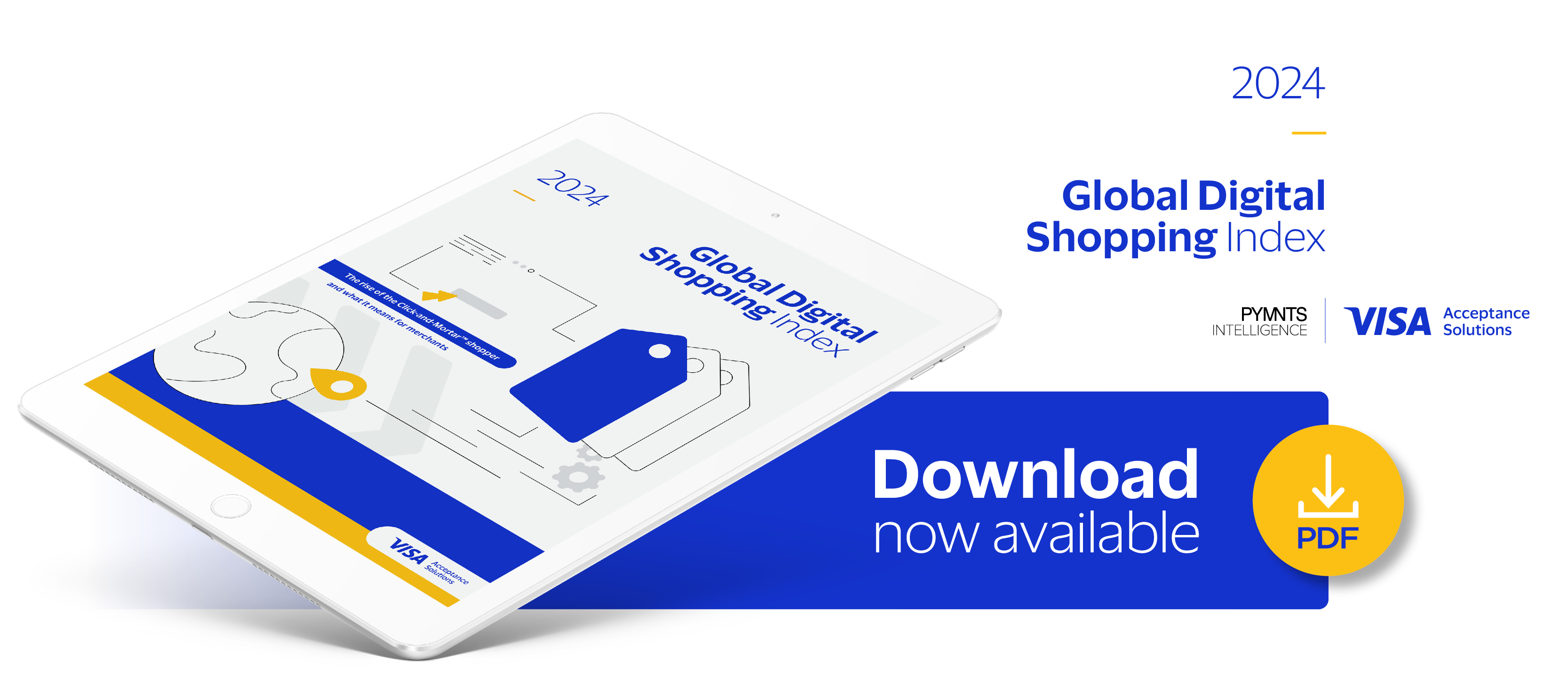Meet the Click-and-Mortar Shopper: The Fastest Growing Shopper Segment Worldwide
Online and in-store shopping need not be separate, according to the consumer experience transforming the retail landscape: Click-and-Mortar™ shopping. Shoppers with a Click-and-Mortar™ approach use both digital tools and physical locations, as the name implies. These consumers just want easy shopping experiences.
Convenience and consistency across shopping touch points are key with this group. The share of shoppers with these habits increased by a combined 38% across Brazil, the United Kingdom and the United States since 2020.
Today, 39% of consumers in the seven countries studied worldwide are Click-and-Mortar™ shoppers. Although many consider this the digital era, physical stores remain very important. Seventy-one percent of shoppers find the physical store central to their shopping experience — and most shop with some form of digital feature assistance.
The “2024 Global Digital Shopping Index: The Rise of the Click-and-Mortar™ Shopper and What It Means for Merchants” was commissioned by Visa Acceptance Solutions and examines consumer and merchant behavior trends to document the rise of Click-and-Mortar™ shopping. This series of reports, designed and conducted by PYMNTS Intelligence, draws on insights from a survey of 13,904 consumers and 3,512 merchants across seven countries conducted from Sept. 27, 2023, to Dec. 1, 2023.
Click-and-Mortar™ Habits Define a Growing Segment of Shoppers
In 2020, digital features were central to navigating the increasingly difficult shopping climate. With stock shortages sweeping the globe, a limited ability to shop in person, and a widely perceived need to get in and out of a store faster than ever before, society’s reliance on digital features soared. Now, you can check if your item is in stock before leaving home, swiftly find the right aisle for your items and pay with a tap of your phone.
 Integrating digital features into daily shopping habits in this and similar ways has helped Click-and-Mortar™ shoppers become the fastest-growing shopper segment globally, up more than one-third since 2020 in Brazil, the U.K. and the U.S.
Integrating digital features into daily shopping habits in this and similar ways has helped Click-and-Mortar™ shoppers become the fastest-growing shopper segment globally, up more than one-third since 2020 in Brazil, the U.K. and the U.S.
Clicks In-Store Drive Satisfaction and Spend
Although Click-and-Mortar™ shopping has swept the globe, young consumers lead the charge. The share of Generation Z consumers who are Click-and-Mortar™ shoppers is double that of baby boomers and seniors. Even so, 1 in 4 baby boomers and seniors use Click-and-Mortar™ shopping styles, suggesting the appeal to features’ convenience is universal.
As millennial and Gen Z shoppers grew up in the digital boom, it stands to reason that these shoppers have come to rely on these features. Younger demographics will likely continue to age into the consumer majority and further expand the number of Click-and-Mortar™ shoppers.
Payments Drive Merchant Preference as Click-and-Mortar™ Grows
Merchants that fail to offer payment choice and mobile site compatibility risk losing roughly three-quarters of shoppers. The number of customers these merchants stand to lose to feature failure will rise as the population of Click-and-Mortar™ shoppers grows.
 Merchants must integrate core digital features into their retail strategies. One particular feature reigns supreme: consumers’ ability to use a preferred payment method. This feature was the only one universally considered table stakes for all shoppers.
Merchants must integrate core digital features into their retail strategies. One particular feature reigns supreme: consumers’ ability to use a preferred payment method. This feature was the only one universally considered table stakes for all shoppers.
The ‘When’ Drives the ‘How’ for Shoppers
Consumers’ approach to their shopping experiences depends on what they want to buy. For example, obtaining fresh groceries immediately lends well to a mostly in-store experience. In the U.K., consumers complete nearly two-thirds of retail purchases remotely. At the same time, they complete most of their grocery shopping in-store. In India, one-third of consumers exclusively shop in-store for groceries, but just 5% shop in-store for other retail items. While grocery and retail shopping patterns differ, PYMNTS research found a strong preference for Click-and-Mortar™ shopping in both sectors.
Download the “2024 Global Digital Shopping Index” and other reports in the series to learn more about consumer and merchant behavior trends behind the rise of Click-and-Mortar™ shopping experiences.
